|
|
Dear Friend:
Happy Holidays! As we celebrate the season and look forward to the year ahead, I'd like to take this special "Year in Review" edition of
Our Valley News
to look back at what made 2016 such a special year in the San Fernando Valley.
This year was particularly important to me as it marked my 10th anniversary as a full time elected public servant. A decade ago, in December 2006, I took office as a freshman State Assemblymember in Sacramento, representing the San Fernando Valley. After two decades working in the private sector, I was enthusiastic to put pen to paper on some of the policy ideas that I'd thought long and hard about before I was elected, issues that I knew would matter to the people of the San Fernando Valley.
Some of the things I spent countless hours fighting for in Sacramento a decade ago have had a significant impact on our region and California as a whole. I took tough votes to keep our state fiscally stable during the Great Recession, worked to hasten California's shift from fossil fuels to renewable energy sources, passed a law to prevent predatory profiteers from scamming up-and-coming actors, authored the first successful film incentive tax credit to stop runaway production and save jobs; and was intimately involved in efforts to revitalize Laurel and Valley plazas, once the shopping and entertainment hubs of the East Valley.
With the support of my colleagues and constituents, I made substantial progress for our Valley in Sacramento. Little did I know then that just three years later, I would be back in Los Angeles representing the San Fernando Valley once again and working on the policies I first tackled at the state level.
Many of those policies have not only remained relevant, but in my time as your City Councilmember, I have had the opportunity to implement and expand them. In 2016 alone, I led the LA City Council to put our city on the path to 100 percent renewable energy, worked with the City Attorney's office to step up prosecutions of talent scammers under the state law I wrote, made sure the City of Los Angeles was ready for the influx of local production from the revamped version of my initial film and TV tax credit; and worked with the community to secure a transformative redevelopment project at Laurel Plaza, called NOHO West.
Moving Forward
This year was also notable for the forward movement we made on a number of additional issues that directly impact our communities.
One of our biggest victories this year was the passage of Measure M, the initiative that will pump more than $120 billion into our county's public transit infrastructure. Valley voters overwhelmingly stated their wish for more rail, bus, bike and pedestrian travel options. My advocacy on the Metro Board will ensure that the Valley's priority projects are done on budget and on time.
As chair of the City Council's Budget and Finance Committee, I know how to set a budget and stick to it. I'm proud to say that this year we passed an $8.76 billion balanced city budget that restored funding for vital neighborhood services, like street and sidewalk repair, improved public safety and the biggest investment in homeless services that the city has ever made.
That investment was compounded tenfold at the ballot when LA voters passed a plan to tackle homelessness in the City of Los Angeles. With Measure HHH, voters approved $1.2 billion to build housing and provide services to the people who need them most. I enhanced that investment with a new pilot program in the Valley to combine housing and job training services for homeless individuals.
We continued to expand other city services as well. As I launched the city's first sidewalk repair program in 40 years, my office put in a new 1,700 foot sidewalk near Bellingham Elementary School, and repaired broken sidewalks in front of parks, libraries and fire stations across Council District 2. With my help, the city repaired 2,400 lane miles of streets citywide, including 58,560 feet in the East Valley.
My office cleaned more than one million square feet of graffiti from 11,354 locations. We also removed 136 tons of bulky items from neighborhood sidewalks and streets as part of the Clean Streets program.
To preserve our urban greenery, I authored a motion to create a citywide management plan that will preserve street trees, while also creating parks, sprucing up playgrounds and planting hundreds of trees in North Hollywood, Sun Valley and elsewhere. Throughout the district, we trimmed 3,489 overgrown trees and removed 197 dead stumps and trunks to keep residents and property safe.
Another central focus of my work in 2016 was drafting and approving the city's new Job Creation Plan, the result of a 15-month collaboration with small business owners and advocates. The plan overhauls and streamlines the way Los Angeles serves the business community, creates better avenues of communication between businesses and the city, and puts Los Angeles in a more proactive, pro-business and pro-jobs role. Los Angeles has seen a net growth in businesses for more than 20 years, has cut unemployment in half over the last decade and has added 135,000 jobs in the last three years. These are all positive trends that I believe we can continue to build on in the year ahead.
We also improved public safety in our city and in our neighborhoods. The budgets for both the Fire Department and the Police Department were increased and they were able to hire and train new personnel to serve our communities.
In addition, Los Angeles continued to lead the nation with creative, common-sense efforts to prevent gun violence. I worked with the Ad Council and the National Crime Prevention Council to launch the citywide "Lock It Up" public awareness campaign, which educated Angelenos about the new law that I authored mandating safe storage and locks for handguns at home. My motion to trace crime guns to the dealers who sell them got support from violence prevention groups nationwide.
The most basic safety we cherish is the ability to feel safe walking around in our communities. That's why I led the charge to install four new traffic signals, 10 all-way stop intersections, two partial stop intersections, six crosswalks and rapid flashing beacons to help people get safely across a dangerous street.
This is just a snapshot of everything that we've done together over the past year, more of which is highlighted below. Above all, I want to thank you for your support and engagement in 2016. I look forward to serving you and working with you to make our community even better in the year ahead.
Very truly yours,
Paul Krekorian
Councilmember, Second District
|
|
|
Forging a Stronger Financial Future
The 2016-2017 fiscal year budget has laid the path for a strong financial future for Los Angeles. During this year's round of intensive public hearings, the City Council, led by Budget Chair Krekorian shepherded an $8.76 billion budget, putting LA
on pace to eliminate the remaining structural deficit in three years. At $334 million, LA also has the largest Reserve Fund in the city's history, along with another $93.14 million in the rainy day fund. While maintaining a responsible posture, this year's budget started the much-needed process of restoring neighborhood services and made substantial funding commitments to infrastructure and programs that will improve the lives of Angelenos today and into the future.
The budget increased funding for public safety, street and pothole repairs, tree trimming, sidewalk repair and much more.
|
|
| Click the image above to see the full budget infographic. |
|

|
A Cleaner, Greener Community
This year, Councilmember Krekorian took on the Clean Streets challenge, working with community members, neighborhood councils, and local and city partners to remove blight from neighborhood streets. Additionally, Councilmember Krekorian held 21 community cleanup events throughout 2016 and worked with the Bureau of Sanitation to close 41,284 requests for bulky item pickups in the East Valley.
Councilmember Krekorian also
helped plant 130 new trees along a formerly blighted streetscape in Sun Valley. The drought tolerant trees that now line the area will provide cleaner air and a better view for residents and passersby.
|
|
|
|
100% Clean Energy
The City Council, led by Councilmember Krekorian, took bold and decisive action by voting 12-0 to make Los Angeles the biggest city in the country to move toward a fossil-free future. The new road map will get LA to 100 percent clean energy in an efficient, sustainable and equitable way.
The 100 percent clean energy mandate gives Los Angeles guidance as we transform the way the city powers its schools, businesses and homes.
Under the leadership of LADWP, the research partnership will focus on identifying the roadblocks that stand in the way of a completely clean energy portfolio, and will make policy recommendations to the City Council.
|
Whitnall Dog Park Makeover
Councilmember Krekorian, the Dept. of Recreation and Parks and the Beneful Dream Dog Park Project team celebrated the announcement of Whitnall Off-leash Dog Park's extreme makeover.
The dog park recently won Walmart.com's #MyBenefulPark contest to receive $20,000 to improve the park. Councilmember Krekorian announced an additional $20,000 in matching funds to complete major park upgrades.
Krekorian will work with the community and the Dept. of Recreation and Parks to decide how the $40,000 improvement funds will be used and when the projects will begin.
|
|
 |
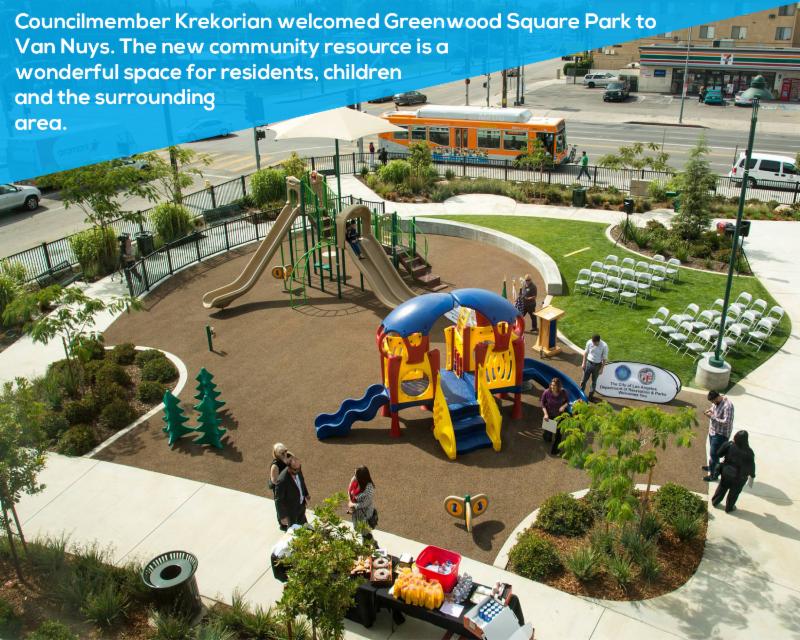 |

|
 |

|
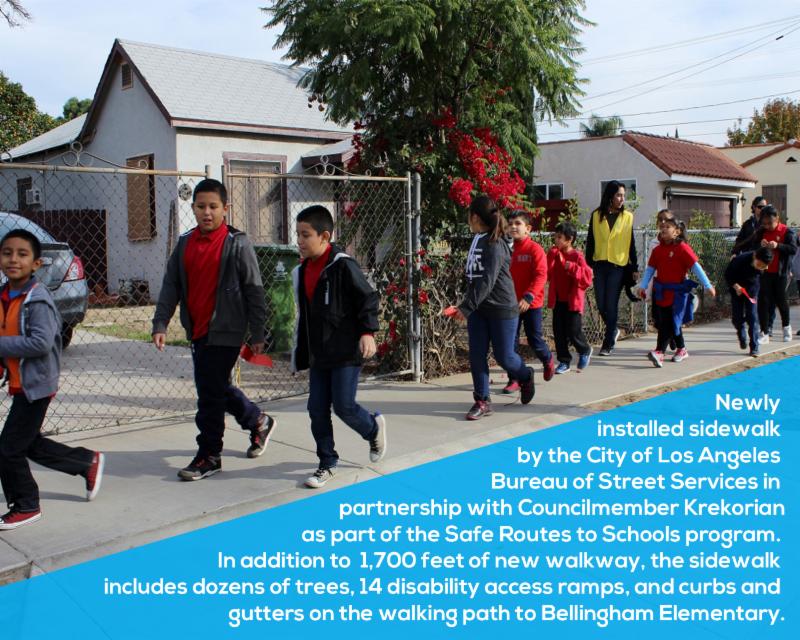
Safe Sidewalks LA
For the past 40 years, Los Angeles residents were stuck with dysfunctional sidewalk policy. Broken and buckled sidewalks posed an unnecessary barrier to a better quality of life for Angelenos in neighborhoods across the city. This year, the City of Los Angeles just launched an unprecedented, comprehensive sidewalk repair program, called
Safe Sidewalks LA
, which will invest $1.4 billion over the next 30 years to make all 11,000 miles of the city's sidewalk grid accessible and safe for everyone.
Safe Sidewalks LA is one of the biggest and boldest infrastructure programs in LA's history. Councilmember Krekorian led 10 public hearings to study how best to implement the plan, where he discussed myriad policy options, heard comments from hundreds of Angelenos and considered a number of reports on the matter, which led to the program we have today.
|
"Safe Sidewalks LA is an equitable plan to repair every sidewalk in the city that needs it."
|
Starting right now, sidewalk repairs will begin in residential and commercial neighborhoods. These repairs will improve neighborhood safety, boost the quality of life and better connect our communities. Property owners can choose from several options that are available in the program: Rebate Program, a first-come-first-serve program that can provide up to $2,000 to homeowners and $4,000 for commercial property owners who want to repair their own sidewalk; and Access Request Program take complaints and make repairs requested by people with a mobility disability who encounter physical barriers, like broken sidewalks, missing/broken curb ramps or other barriers in the public right of way.
Residents who do not qualify for either of those programs should still report broken sidewalks and request repairs at www.sidewalks.lacity.org. The city will repair all broken sidewalks over the course of the 30 year program.
|
 |
Street Improvements
As part of an ongoing push repair aging infrastructure and build better, and safer streets,
Councilmember Krekorian directed hardworking Bureau of Street Services crews to repave several major corridors throughout the East Valley, including Cahuenga Boulevard, Coldwater Canyon Boulevard and Mulholland Drive.
|
Signals, Crosswalks and Safer Streets
District 2 neighborhoods welcomed numerous traffic safety improvements this year that will keep pedestrians, bicyclists and drivers safer on the road. In addition to new traffic signals and crosswalks, Councilmember Krekorian worked with the LA Dept. of Transportation to install 10 new all-way stop signs, left-turn signals, speed feedback signs to reduce speeding vehicles, and 41 access ramps to improve mobility for all residents.
|
 |
Stopping Gun Violence
The City of Los Angeles continued its groundbreaking work to stamp out gun violence in 2016. Let by Councilmember Krekorian, the Los Angeles City Council voted 13-0 to study how guns used in crimes make it onto LA's streets in the hopes of stemming gun violence, making LA the largest U.S. city to trace crime guns to "bad apple" dealers who sell them.
According to the Bureau of Alcohol, Tobacco, Firearms and Explosives, just five percent of gun dealers sell 90 percent of all crime guns nationwide. These gun dealers skirt the law to sell guns to criminals, domestic abusers and fugitives. LA's measure, introduced by Councilmember Krekorian, instructs the Los Angeles Police Department to work with Crime Gun Solutions, an independent research organization, to conduct a study that will identify the sources of the recovered crime guns in the LA area and to determine whether or not they come from "bad apple" gun dealers.
|
"Lives are cut short or changed forever by gun violence every day in America. As the City Council voted on this very motion to identify how guns make it onto our streets, we got news of another fatal shooting, this one on UCLA's campus. Many crimes like this are committed by people with guns they shouldn't have access to, guns sold by a few 'bad apple' gun dealers. I want to determine the source of the guns that make it onto our streets so that we can then take appropriate steps to protect the public. Our city has lead the way on gun violence prevention issues and I see this as another opportunity to reduce the number of families ripped apart by gun violence."
|
In early 2016, 200 LA Department of Transportation DASH buses hit the streets outfitted with new, educational advertisements urging Angelenos to "Lock It Up" and safely store their firearms when not in use.
The ads read: "Lock It Up: Never let your gun get in the wrong hands" and featured a provocative photo of a young child holding a handgun, illustrating the extreme perils of keeping guns unlocked and loaded at home. LA's "Lock It Up" campaign was carried out in collaboration with the Ad Council and the National Crime Prevention Council, with funding by the Bureau of Justice Assistance, U.S. Department of Justice. Los Angeles was the first city in the country to mount such a large-scale public outreach campaign urging gun safety.
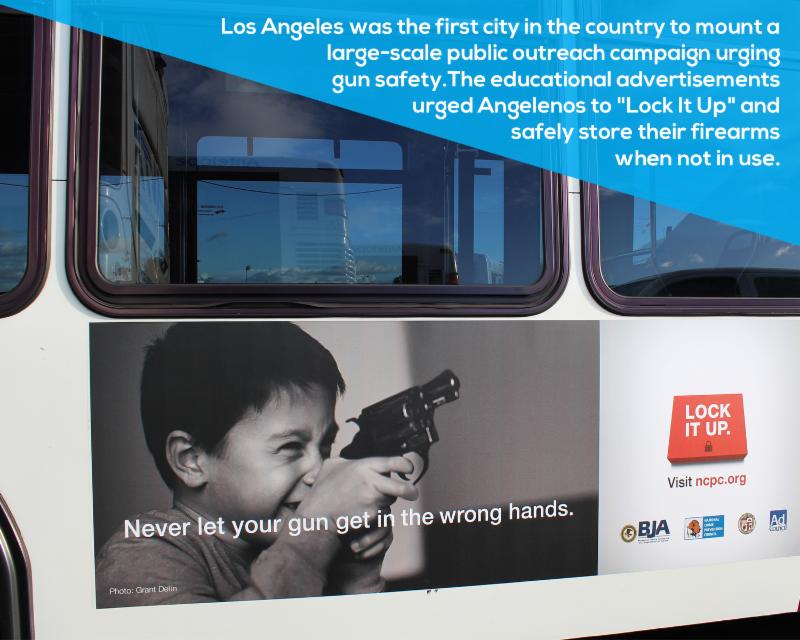
|
 |

|
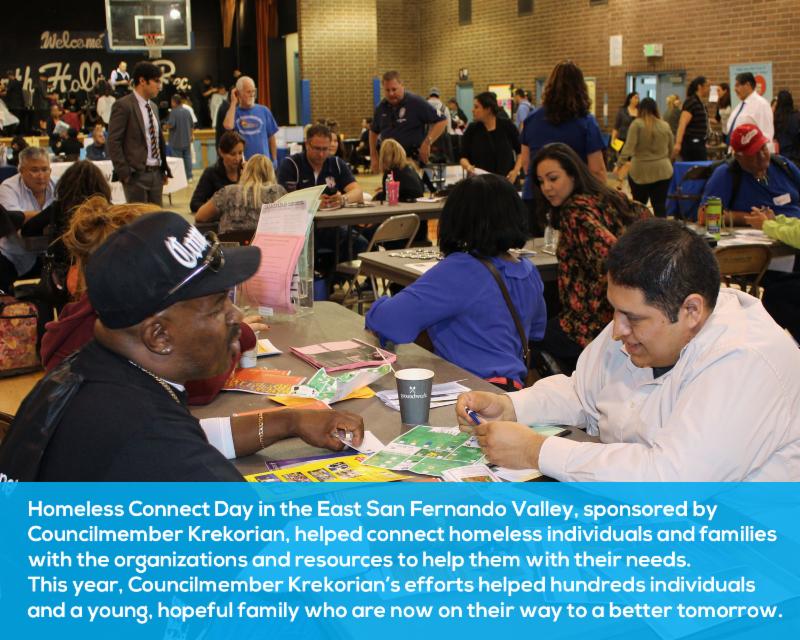
Making Strides to Tackle Homelessness
Every night, more than 28,400 people experience homelessness in the city, including 21,300 who lack a roof over their head or a shelter bed. The most recent Homeless Count, tallied by Los Angeles Homeless Services Authority, showed a 5.7 percent increase in homelessness throughout the city with an even greater uptick in the San Fernando Valley. One bright spot was the city's ability to reduce the number of homeless veterans by 41 percent, due to our attention to this particular population in need.
In this year's budget, city leaders declared the intention to reduce homelessness overall by radically increasing funding for homeless services. There is $138 million dedicated in the budget to homeless services, more than in any budget before. The money is going toward constructing hundreds of units of affordable and permanent supportive housing, providing rapid re-housing rental vouchers; ensuring shelter beds, including winter, sobering and domestic violence shelter beds; cleaning up thousands of encampments to improve public safety; and enhancing the coordinated entry system so that more people know about and have easy access to the services provided by the city and county.
LA's efforts got a major vote of confidence when city residents approved Measure HHH, which will dedicate $1.2 billion over the next decade to house the homeless.
|
 |
|
|
|
Homeless Connect Day
In 2016, Councilmember Krekorian hosted multiple days of service for homeless individuals called Homeless Connect Day,
a one-stop shop for resources and services to
connect
city, county, state and nonprofit agencies to
homeless
individuals.
Hundreds of people have attended the events, all of whom were introduced to and served by local homelessness service providers. People received, showers, haircuts, blankets, clothing, pet care, hot meals and were connected with housing, the DMV and other social services they need to get by.
|
A New Idea to Reduce Homelessness
Councilmembers Krekorian and Marqueece Harris-Dawson created a new, innovative pilot initiative that will pair rapid rehousing with job training in order to get people off the streets and prevent them from falling back into homelessness.
The program will work by providing rapid rehousing through a subsidy for qualified homeless families and individuals with wrap-around supportive services. The housing services will be paired with a jobs program to train and prepare unemployed people for continued mainstream employment.
|
|
 |

|
A New Era for Transportation and Mobility
Mass transit in Los Angeles has become a regular part of our lives, which was almost unimaginable just 25 years ago. With the passage of Measure M, Angelenos have invested in a more complete transit system for the next half-century.
T
he half-cent sales tax measure will raise $860 million a year countywide to revolutionize LA's transportation network and add 465,690 new jobs across the region. With Measure M, the City of Los Angeles also will receive nearly $9 billion in local return money for local transportation projects over the next 45 years.
This bold transit plan will allocate more than $120 billion to boost transit investment, ease traffic and, most importantly, deliver on the Valley's top transit priorities: a transit connection between the Valley and the Westside through the Sepulveda Pass; a light rail connection to the North Valley through the East San Fernando Valley corridor; improving the Orange Line and converting it to light rail; 405 enhancements and other highway improvement projects; transit connection between North Hollywood and Pasadena; local street, sidewalk and signal improvements; affordable fares for seniors, students and the disabled; a complete full length of the LA River Bikeway; and
walkway expansions and additional bike paths throughout the Valley.
|
 |
|
|
|
|
NoHo-Pasadena Express
The Metro Board of Directors, led by Councilmember Krekorian, launched the NoHo-Pasadena Express bus line as a pilot program in March of 2016 to better connect the San Fernando and San Gabriel Valleys. The NoHo-Pasadena Express provides a fast, frequent and reliable transit alternative that connects the valleys by using the carpool lanes on the 134 Freeway. The express bus speeds Metro riders from North Hollywood to Burbank, Glendale, and Pasadena in approximately 45 minutes.
|
Orange Line Upgrades
Metro conducted tests to increase the speed of Orange Line buses up to 35 miles per hour at intersections in order to improve the transit line's travel time and efficiency.
The speed improvements are one of several proposed plans championed by Councilmember Krekorian to upgrade the Orange Line.
Metro is also studying converting the Orange Line to light rail, a proposal introduced by Councilmember Krekorian in his capacity as a Metro Board Member, and
to create an implementation plan for using electric buses on the Orange Line by 2020.
|
NoHo Station Pedestrian Tunnel
This year marked the opening of Metro's North Hollywood Underpass Project, a brand new pedestrian tunnel that directly connects the Orange and Red Lines.
The $22 million pedestrian tunnel is an important step toward making North Hollywood a safer,
more connected neighborhood.
Equipped with stairs, an escalator
and dual elevators, the tunnel will save transit users up to five minutes when walking from the Orange Line Station plaza to the Red Line platform, making it easier and safer for riders to connect to the Metro system.
|
|
 |

|
Getting LA to Work
This year, the City Council unanimously approved a citywide plan to create jobs and make Los Angeles more business-friendly. As the chair of the Ad Hoc Committee on Comprehensive Job Creation Plan (Jobs Committee), Councilmember Krekorian was tasked with presenting a strategy to stimulate economic and job growth throughout the city and overhaul the way LA serves the business community. The comprehensive Job Creation Plan accomplished that goal. Over the course of 12 public hearings, the Jobs Committee worked with the Mayor's office, city department leaders, and business owners and advocates to streamline LA's policies, programs and procedures, putting the city in a proactive, pro-business and pro-jobs role.
The Job Creation Plan is comprised of 35 ideas and reforms that solve problems businesses face when they do business in or with the City of Los Angeles. The plan created a permanent Business Advancement Team to rapidly respond to local business needs and navigate the city's rules and resources. It also paved the way for the Small Business Commission, an appointed body that will give business owners and experts the ability to share input directly with city policymakers. LA also launched a small business website with information on permits, licenses and incentives -- a one stop shop for local businesses.
Take a look at the Job Creation Plan and the Jobs Committee's recommendations:
Job Creation Plan
.
|
 |
|
|
|
Keeping Small Businesses Open
Councilmember Krekorian in partnership with the
Los Angeles Department of Water and Power,
established the Capital Projects Business Ret
ention Program. As the first of its kind in LADWP history, the program provides financial assistance to businesses to alleviate some of the adverse impacts of ongoing construction work. The program was launched as a response to the trunk line replacement work taking place in the East Valley.
The small business community along the project in North Hollywood has been devastated by the construction -- loss of parking by their storefronts, no visibility of the businesses and traffic are just some of the issues they face. The pilot program's launch was a small lifeline to help keep the doors open and save jobs.
Businesses of 25 employees or less impacted by the construction can apply to the LADWP pilot program and may receive up to $18,000 annually during the project's duration. Information about the program is available on www.ladwp.com/EDD/cpbr.
|
Laurel Plaza's Bright Future
The City Council officially approved NOHO West, a fantastic mixed-use project on the old Laurel Plaza site that will bring 327,850 square feet of new restaurants, vibrant shops, movie theaters, a grocery store, a fitness center and much more to the East Valley.
NOHO West will also create 244,150 square feet of new, state-of-the-art office space to support hundreds of high-paying entertainment and tech jobs. To make the project economically feasible and to bring new families to the area, it will include 642 units of housing. NOHO West will provide a near-perfect balance of commercial energy and residential opportunity.
Councilmember Krekorian worked with the community and the developer secure many important project improvements that will benefit the neighborhood. Insisting that NOHO West be tailored to meet the needs of the local community, Krekorian won positive changes, including on size, aesthetics, traffic, parking, landscaping, lowering the amount of housing by 100 units; increasing open space, green space and landscaping; reducing the project's height; and adding nearly 30,000 square feet of additional commercial space.
|
|
 |

|
 |
 |
Stronger Together
Serving the diverse communities of the East Valley that Councilmember Krekorian represents is the main function of his office.
From hosting community events, such as the Emergency Preparedness Summit, the Community Interfaith Dialogue Against Gun Violence, the Community Forum on Traffic, or community festivals, to taking requests for graffiti cleanup and blight, Councilmember Krekorian and the District 2 staff are dedicated to staying closely engaged on all the issues -- keeping the community well-informed and addressing their needs.
The Councilmember's staff enjoys the work they do and takes great pride in serving the public every day to improve their quality of life. Here are just a few examples of the thousands of interactions that the Council District 2 team had with city residents this year:
|
Councilmember Krekorian's office took swift action when a resident called Krekorian to report wage theft. Krekorian's staff worked LA's Office of Wage Standards to recover more than $3,500 in lost wages.
|
Councilmember Krekorian's office helped start new neighborhood watch groups in various communities, including a very successful effort for a group of businesses in North Hollywood.
|
|
After a string of car break-ins in North Hollywood, Councilmember Krekorian worked with the NoHo West Neighborhood Council to donate more than 200 anti-theft steering wheel locks to the LAPD North Hollywood Division for distribution to community members in need.
|
When a homeless youth reached out Councilmember Krekorian's office for help to find his way home to Ohio, Krekorian's staff partnered with the Los Angeles Homeless Services Authority to help provide the young teen with food, resources and housing, while the agency worked to connect the individual with a local non-profit to help him get back home.
|
|
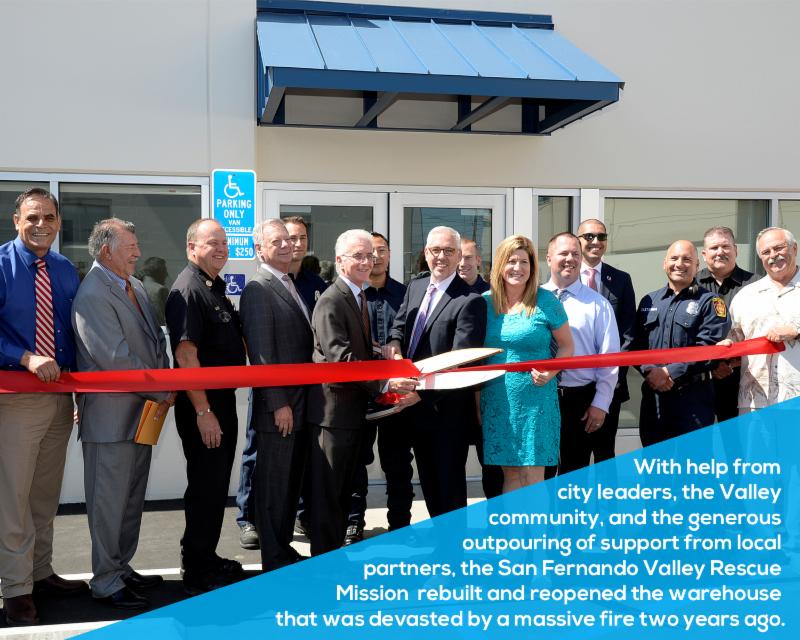 |
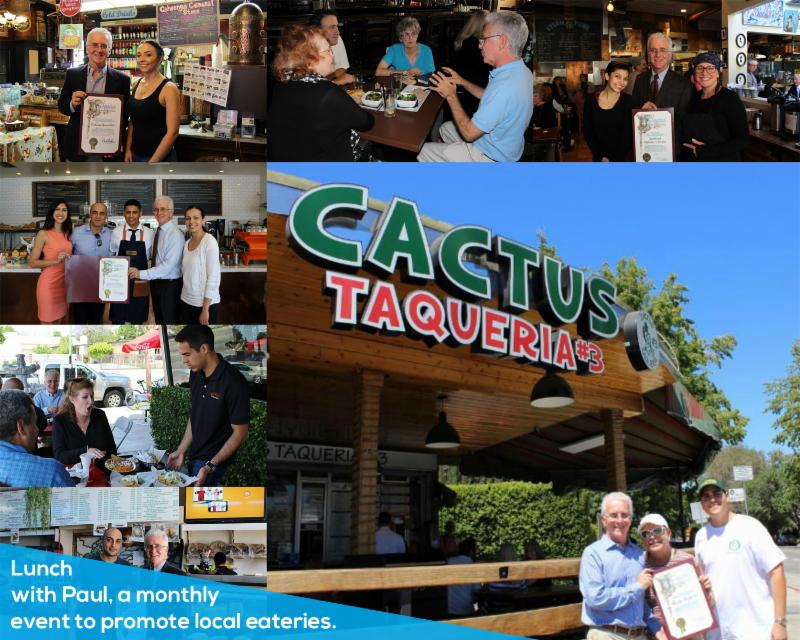
Keeping District 2 Connected
Community events and meetings with constituents across District 2 kept Councilmember Krekorian connected to the most important issues facing Angelenos.
|
Everyday Heroes
This year, Councilmember Krekorian led special presentations for many community partners and individuals who have made tremendous contributions to the community. Among the many honorees were Women Against Gun Violence, Arts Day LA, the North Hollywood High Science Bowl team, Armenian-American community leaders, local veterans, Pioneer Women in the City of Los Angeles and many more.
|

|
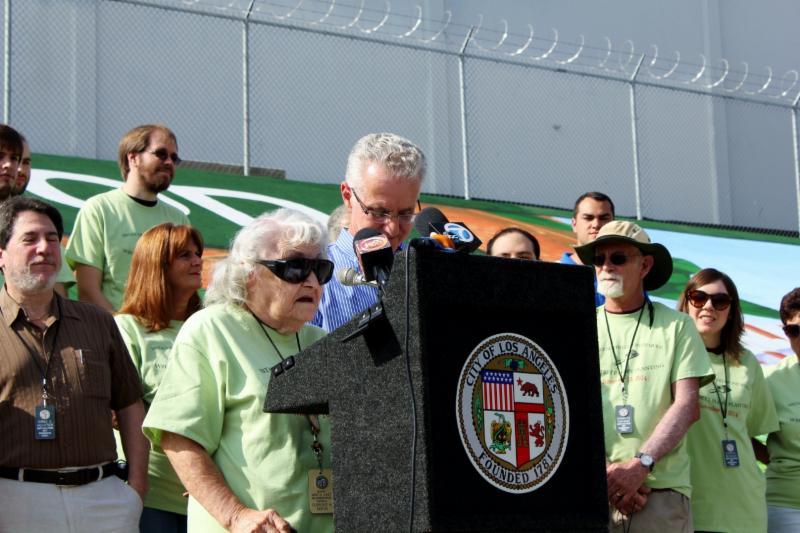
In remembrance of the community leaders who we lost this year, the City Council paid tribute to their legacy of involvement in their local neighborhoods, their impact on the lives of people around them and their courage to make a difference.
Long-time North Hollywood neighborhood activist Florence Dorick is among those who will be missed by many in the East Valley and beyond.
As a member of the North Hollywood Northeast Neighborhood Council, a founding member of the Strathern Neighborhood Watch, a volunteer with the Hope of the Valley Rescue Mission, an organizer for many community cleanups, a leader in bringing National Night Out to North Hollywood, and a champion for transforming the Whitsett Slope into one of the Valley's biggest murals,
Florence
took great pride in her community work.
|
|
|
|
|
Copyright © 2016. All Rights Reserved.
|
|
|
|